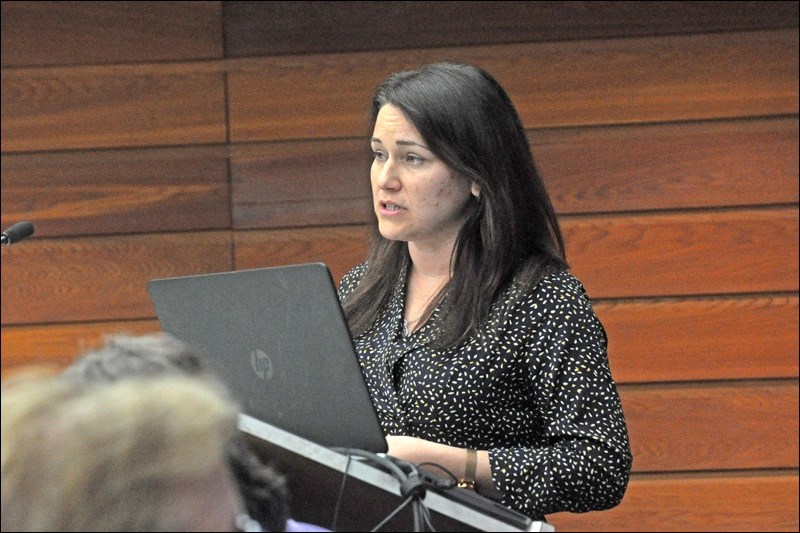Some preliminary findings have been presented to city council from the study of community perceptions of safety in North Battleford.
Dr. Tarah Hodgkinson provided a summary of the key findings and implications in her presentation to council Monday evening. Hodgkinson had flown all the way from Australia to present the findings.
The report, according to its stated objectives, sought to understand perceptions and experiences of crime and safety in the city, to develop a baseline report for future comparisons, and to identify specific areas in North Battleford that may be a focus of these programs and initiatives.
The survey was conducted last fall by Hodgkinson and students from North West College. A total of 615 people responded, well above the 374 needed for the survey to be statistically valid.
City officials emphasized that Hodgkinson’s presentation that night was only of the draft report. Hodgkinson noted these results were “descriptive,” meaning she had not yet done the neighbourhood correlations. A full report with details on numbers will be released to the public in the near future.
However, there were a number of general findings shared with council Monday night. The responses turned up the following:
People in North Battleford know their neighbours. The draft report noted that 86 per cent stated they knew their neighbours by name. On average, they would consider eight of their neighbours as friends. But a much smaller number are actually involved in formal neighbourhood initiatives,
Residents were most likely to be willing to intervene in instances of a fight in front of their home, kids climbing on a parked car, or kids spraying graffiti. They were unlikely to do so when kids skipped school.
On victimization, when asked if they had been a victim of crime in the past two years, about half – 50.4 per cent – said yes. But Hodgkinson was careful to note that it was more likely that victims of crime would respond to a survey such as this one. A large portion of the crime they reported was property crime.
In general, there was high confidence in the police and in procedural justice. When asked opinions on questions related to the police, most respondents agreed to statements that the police did a good job preventing crime, that they care about problems in the neighbourhood, that they treated people fairly, do a good job enforcing traffic laws and treat people with respect. But less than 30 per cent responded they thought the police did a good job controlling drug activity.
On feelings of safety, the draft report noted people do feel safe, pointing to 91.8 per cent feeling it was safe to go outside alone during the day. A lower number, 51.4 per cent, felt it was safe to walk in their neighbourhood at night. These were consistent with provincial and national statistics, Hodgkinson noted.
As for local initiatives, residents were familiar with some more than others. The highest recognition was Community Safety Officers, probably due to their visibility in their uniforms and vehicles, followed by downtown revitalization, Citizens on Patrol, and the block parties initiative.
Also revealing were the results indicating which parts of the city residents considered safe or unsafe. The Killdeer Park neighbourhood received the highest score as the part of the city where people felt the most safe. The area which people identified as feeling the least safe was in the downtown area.
“Downtown areas are often high areas of fear across the country and internationally,” Hodgkinson said. One reason cited was that “residential populations aren’t present so they don’t translate that into ownership of that space.”
As for what happens with the data in the future, there are a number of steps that could be taken. Hodgkinson said discussions are under way about applying to get a three-to-five year grant that could be accessed through National Crime Prevention Centre – Public Service Canada to develop a “massive crime reduction strategy.” There is also an opportunity to pursue a linkage grant from the Australian Research Council. Hodgkinson herself is planning to do follow-up surveys in the community in the coming years.
Mayor Ryan Bater found the results of the draft report “interesting.”
“Some of it’s surprising, some of it isn’t.” said Bater. “A lot of it is understanding the community.”
He said the data gives a “really good understanding” of the community and was something council would be using.
“We got a snapshot of what people understand in terms of initiatives … not surprising, the Community Safety Officer gets a lot of attention.”




